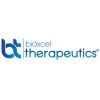Sub-Lingual Dexmedetomidine in Agitation Associated With Dementia (TRANQUILITY)
Agitation,Psychomotor, Dementia

About this trial
This is an interventional treatment trial for Agitation,Psychomotor
Eligibility Criteria
Inclusion Criteria:
- Male and female patients 65 years and older.
- Patients who have dementia and a history of acute agitation.
- History of agitation that requires intervention or impairs social or daily activities
- Patients who meet International Psychogeriatric Association (IPA) diagnostic criterion for agitation.
- Patients with a total score of ≥ 8 on the Pittsburgh Agitation Scale (PAS).
- Patients who have a score of ≥ 2 on at least 1 of the 4 items on the Pittsburgh Agitation Scale (PAS).
- Patients who read, understand and provide written informed consent, or who have a Legally Authorized Representative (LAR).
- Patients who are in good general health.
Exclusion Criteria:
- For Part B: Patients with dementia associated with Parkinson's disease and/or Lewy Body Disease, if etiology of dementia is known.
- Patients with agitation caused by acute intoxication.
- Patients treated within 4 hours prior to study drug administration with benzodiazepines, other sedatives, hypnotics or oral or short-acting intramuscular antipsychotics must be excluded.
- Treatment with alpha-1 noradrenergic blockers, alpha adrenergic antagonists within 8 hours prior to dosing.
- No new chronic medications initiated in the past 14 days prior to screening excluding over-the-counter products taken sporadically.
- Patients at significant risk of harm to themselves or others
- Patients considered medically unstable or in recovery
- Patients with history of clinically significant syncope or syncopal attacks, orthostatic hypotension within the past 2 years, current evidence of hypovolemia, orthostatic hypotension.
- Cohort 3 only: Patients who are taking nitrates or beta blockers shall be excluded. Any other anti-hypertensives should be maintained in the course of the study.
- Patients who have received an investigational drug within 30 days prior to the current agitation episode must be excluded.
- Patients experiencing clinically significant pain, per Investigator.
- Cohort 3 only: Patients who are a high fall risk assessed via the Johns Hopkins Fall Risk Assessment (total score >13) or during the 1-week safety observation period
- Pregnancy
Sites / Locations
- BioXcel Clinical Research Site
- BioXcel Clinical Research Site
- BioXcel Clinical Research Site
- BioXcel Clinical Research Site
- BioXcel Clinical Research Site
Arms of the Study
Arm 1
Arm 2
Arm 3
Arm 4
Active Comparator
Active Comparator
Active Comparator
Active Comparator
Cohort 1- 30 Micrograms
Cohort 2- 60 Micrograms
Cohort 3- 90 Micrograms
Part B Cohort
Cohort 1 consists of 10 patients out of whom 8 patients receive 30 Micrograms film and the remaining 2 patients receive a placebo
Cohort 2 consists of 10 patients out of whom 8 patients receive 60 Micrograms film and the remaining 2 patients receive a placebo. Additional 20 subjects receive 60 Micrograms or placebo.
Cohort 3 consists of 10 patients out of whom 8 patients receive 90 Micrograms film and the remaining 2 patients receive a placebo
Part B cohort consists 46 subjects receiving 40 Micrograms or placebo
Outcomes
Primary Outcome Measures
Secondary Outcome Measures
Full Information
1. Study Identification
2. Study Status
3. Sponsor/Collaborators
4. Oversight
5. Study Description
6. Conditions and Keywords
7. Study Design
8. Arms, Groups, and Interventions
10. Eligibility
12. IPD Sharing Statement
Learn more about this trial
